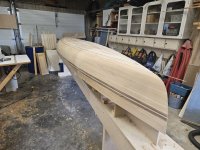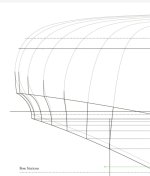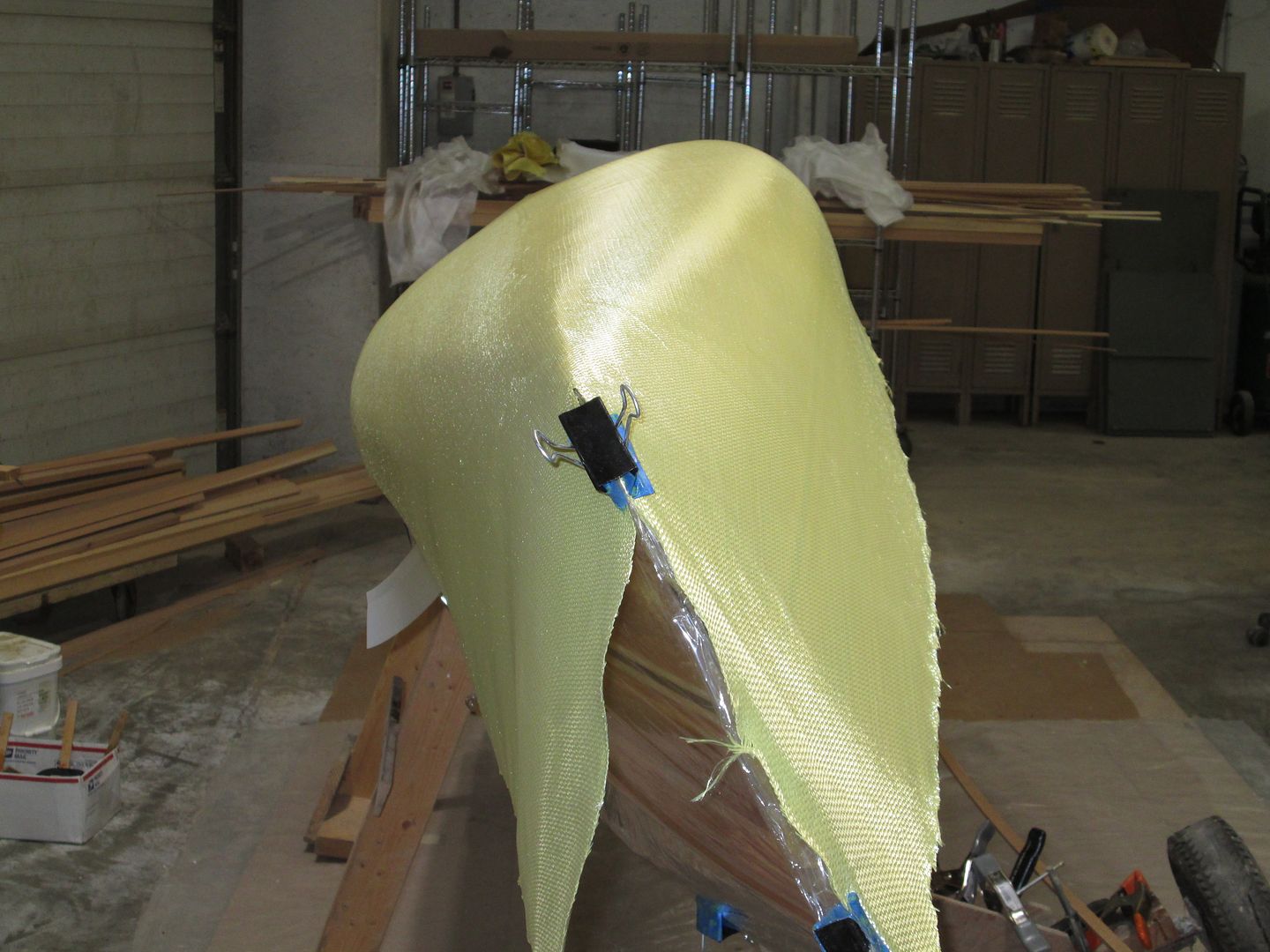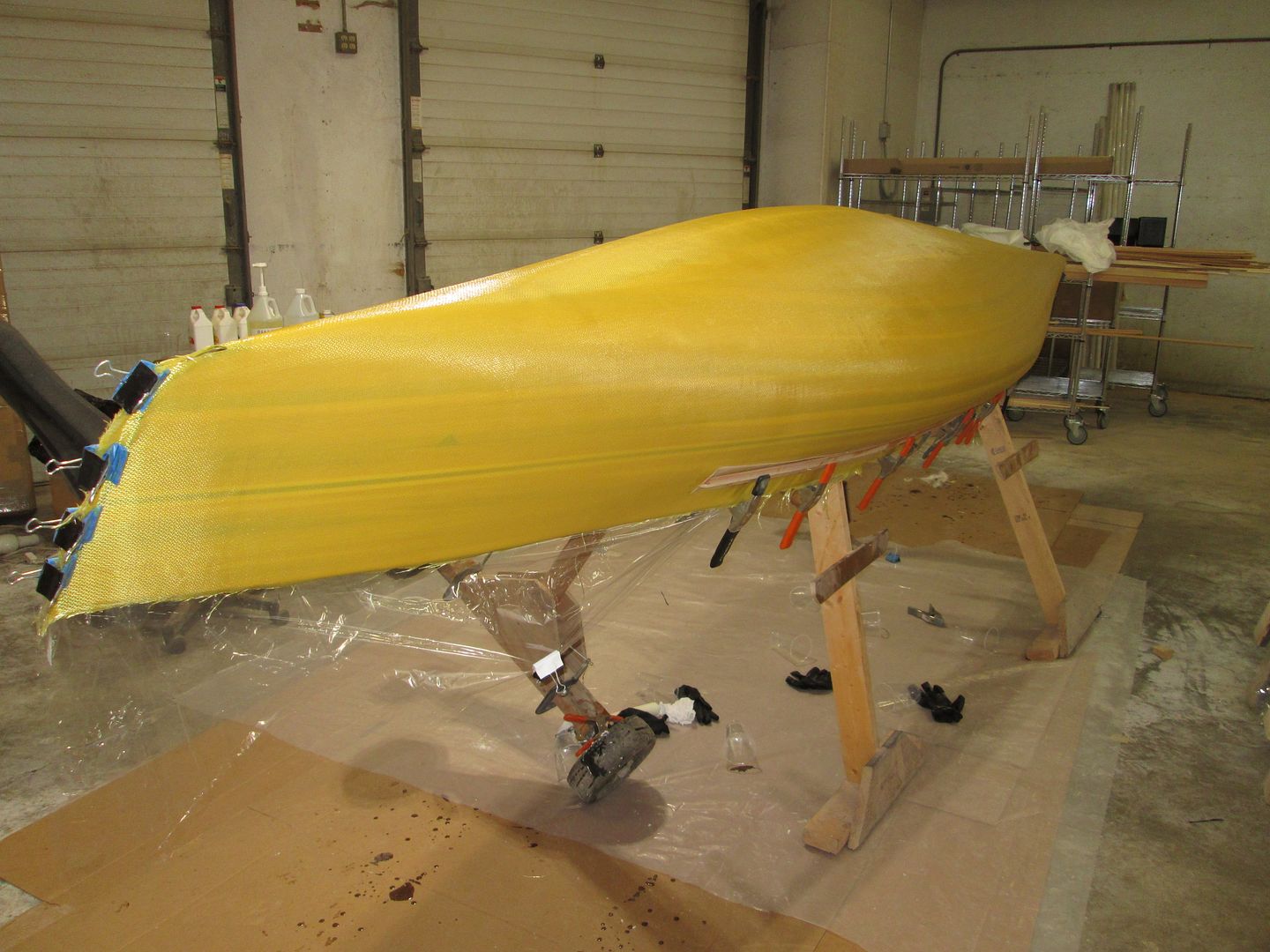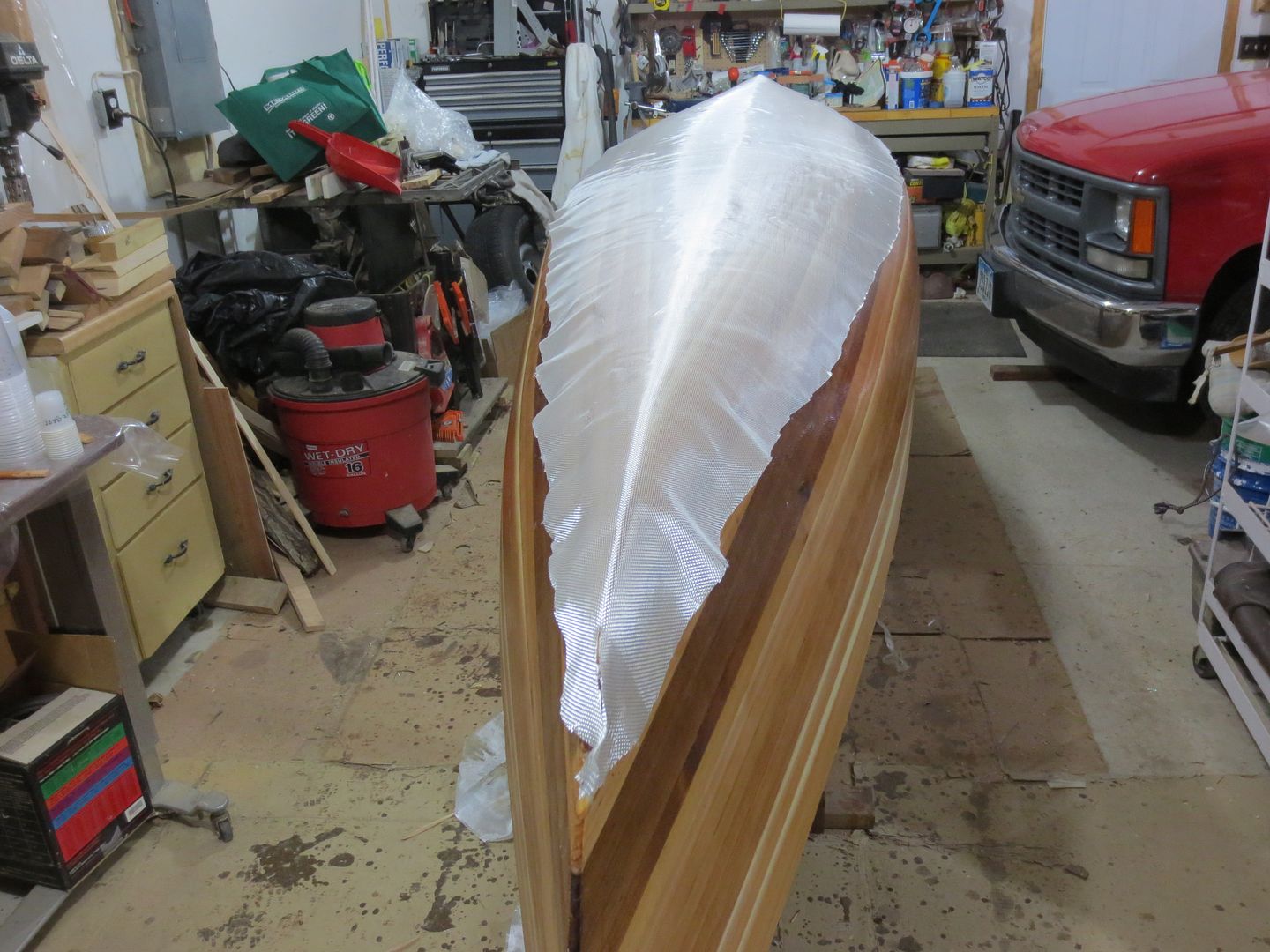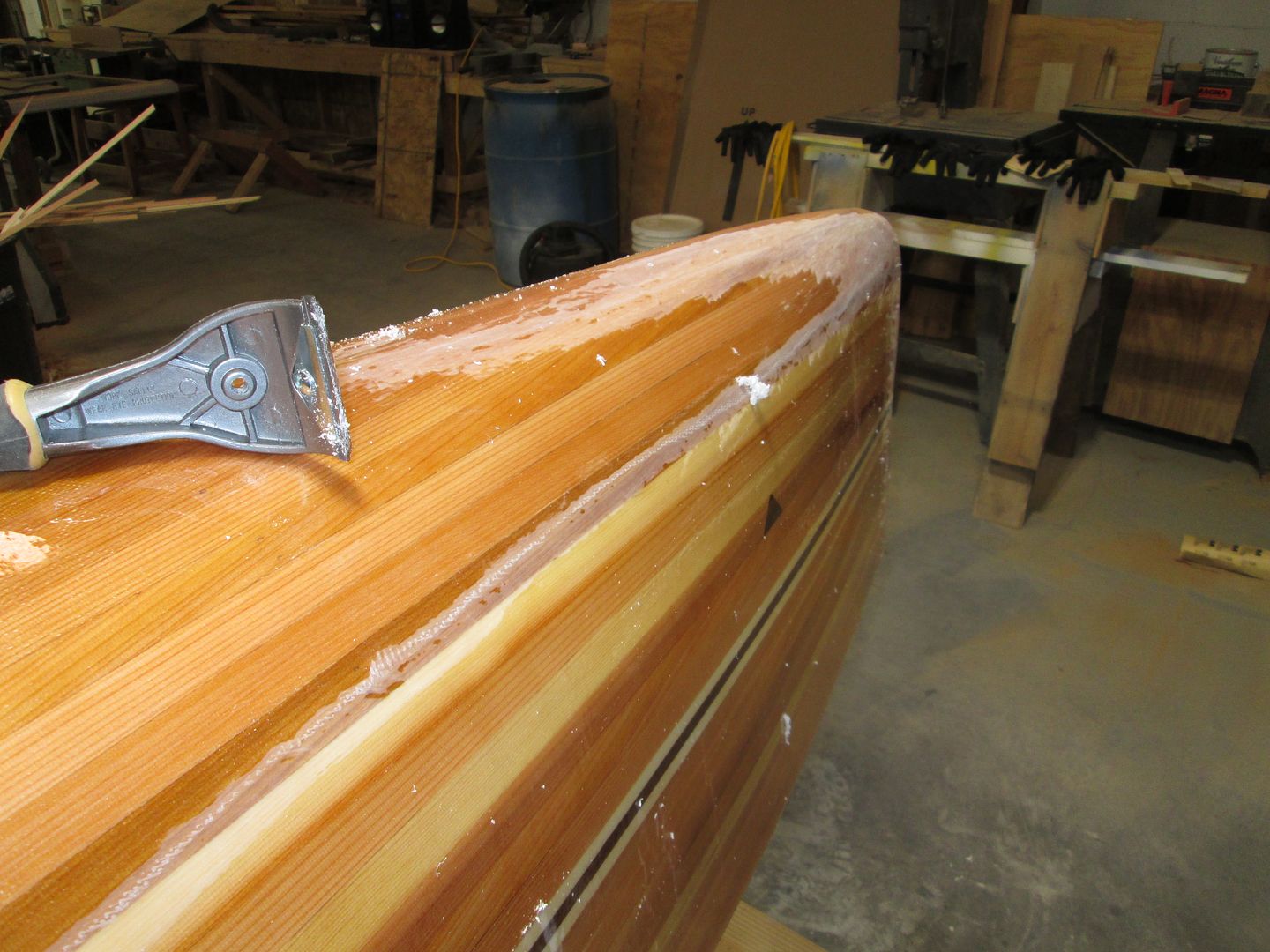So I built this solo canoe with a hard chine and now I really don't know what kind of problems I might run into trying to fiberglass into that tumble home section. I'm concerned the fiberglass either won't make the corner around the chine or that it won't lay flat against the tumblehome.
The angle at the chine is probably similar to the kite, around 45°, but is then curved inward instead of just a straight. I will round it over a little bit as the last step before fiberglassing, which should help, but I'd like any suggestions on how I can make this as successful as possible.
I don't have a better picture of the canoe on my phone so I've included a snip from the plans.
The angle at the chine is probably similar to the kite, around 45°, but is then curved inward instead of just a straight. I will round it over a little bit as the last step before fiberglassing, which should help, but I'd like any suggestions on how I can make this as successful as possible.
I don't have a better picture of the canoe on my phone so I've included a snip from the plans.

